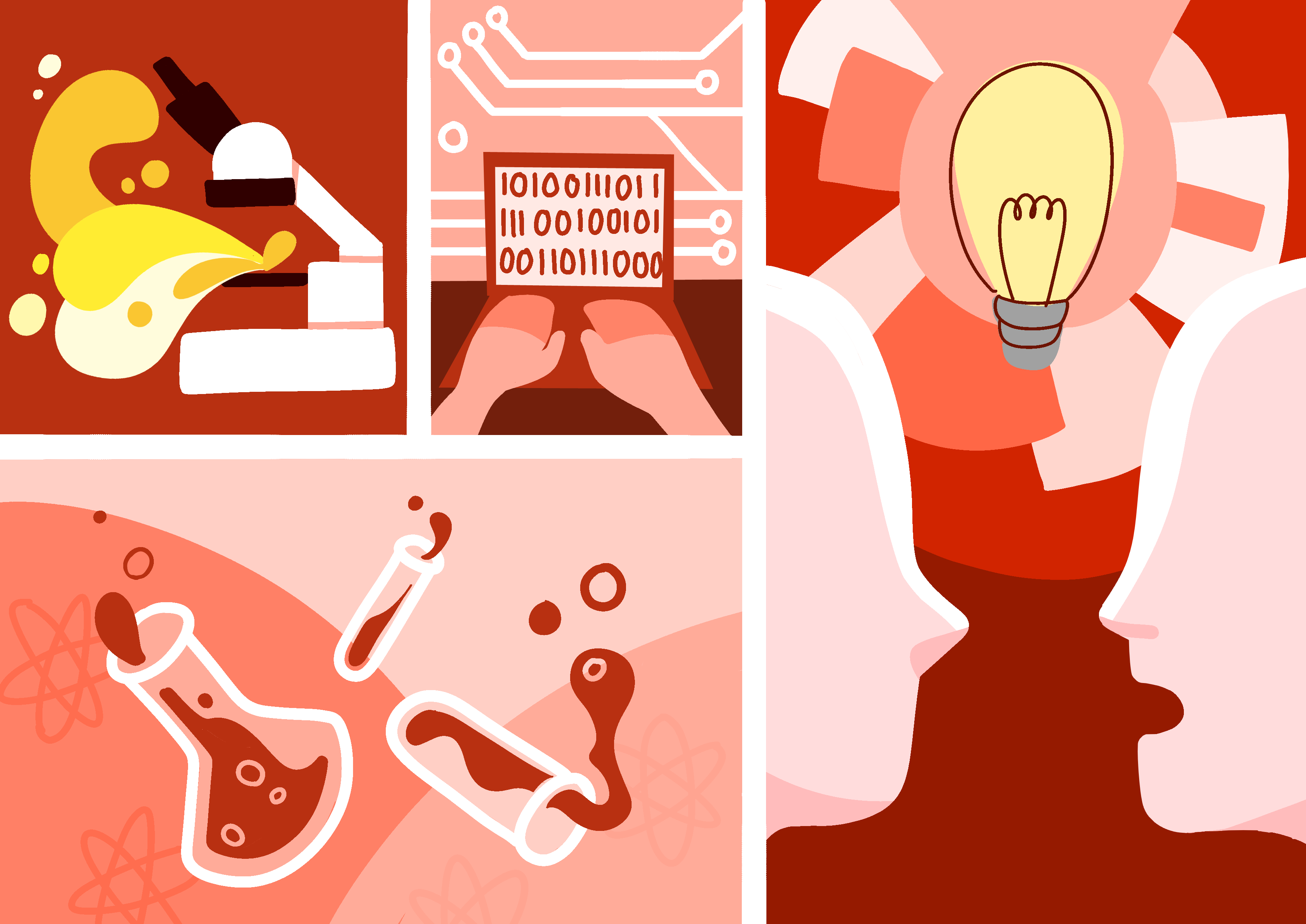The science & technology desk gathers a weekly digest with impactful and interesting research publications and developments at Stanford. Read the latest in this week’s Research Roundup.
Using AI to diagnose patients
A recent study conducted by Stanford researchers from the School of Medicine examined how well artificial intelligence (AI) tools helped physicians diagnose patients.
A group of physicians put their diagnosis skills to the test: They were divided into two groups which, respectively, were responsible for determining diagnoses on patients with and without using ChatGPT as an aid. The overall accuracy scores of these two groups displayed striking similarity, though a separate trial with ChatGPT determining a diagnosis alone, without human intervention, produced a much higher score.
“These findings suggest there are opportunities for further improvement in physician-AI collaboration in clinical practice and health care more broadly,” Ethan Goh, a postdoctoral scholar at Stanford and one of the co-leading authors of the study, told Stanford HAI.
Tools like ChatGPT are known as large language models (LLM) and are trained on a large amount of data containing human language. According to the researchers, many physicians will only feel comfortable using tools like ChatGPT as an aid if they have confidence in accurate training data. They recognize that a potential system built more specific than ChatGPT that is trained on healthcare-related data can help significantly.
Researchers also insist that while LLMs can serve as a potential aid for physicians in the near-future, there is no credence to the idea that they will eventually replace physicians. Although the researchers are focused on AI helping physicians, they are also focused on patient safety, which requires human intervention to interpret AI responses and ensure that physicians make the final diagnosis with careful thought.
“Human physicians handle the treatment side of things, and the hope is that AI tools can help them perform their jobs even better,” Goh said.
Gender bias in images
Researchers at the Graduate School of Business (GSB) conducted a study examining potential gender bias in online image search queries on Google and Wikipedia, examining if men or women were more likely to be associated with a particular activity or profession.
The researchers analyzed about 350,000 images containing men and women in social and professional activities to see which gender was portrayed in a particular profession. They found that the gender gap was “statistically more extreme” and at times did not align with true workforce data.
The study found that men had higher likelihoods of appearing in images performing science and engineering related professions, whereas women were more commonly found in images of humanities-related activities. Researchers grew concerned that these unrealistic portrayals of gender in images online can affect users’ gender stereotypes.
“This surprisingly simple measurement actually predicts a lot about what people think and believe about these categories,” Douglas Guilbeault, an assistant professor in the GSB, told the Stanford Report.
ecDNA changes how we think about cancer
Extrachromosomal DNA, known as ecDNA, consists of tiny circles that each have a small number of genes. In a recent study, Stanford researchers, in collaboration with international colleagues, found that ecDNAs accelerate cancer growth at an unexpected pace.
ecDNA genes are oncogenes, which produce proteins that cause the rapid division of cells. This aids the progression of cancer throughout cells in the body.
The researchers found that ecDNA, found alongside chromosomes in cells, is far more prevalent in cancer cells than previously thought, with 17.1% of the tumors in the study containing ecDNA. This suggests a greater role of ecDNA in cancer, especially given ecDNA’s presence in around 15,000 types of human cancer. Moreover, findings suggested that the amount of ecDNA increased after chemotherapy.
One of the fundamental laws of genetics is Gregor Mendel’s law of segregation, which states that genes randomly segregate, or separate, into different daughter cells. In this case, this means that ecDNA that are advantageous to cancer growth should be rare, because multiple copies of ecDNA would be unlikely to appear in the same cell after separation.
Shockingly, in a November paper, the researchers found many more of these apparently lucky events with cancer-driving ecDNA combinations, calling into question Mendel’s fundamental law for this specific case.
According to the paper, ecDNAs are interconnected during cell division. That way, their genes cannot segregate since the DNA molecules are locked together. So, they segregate together, as a cancer-driving and drug-evading combination.
“It’s like getting a good hand in poker,” Howard Chang, the Virginia and D.K. Ludwig Professor in Cancer Research and a co-author of the study, told Stanford Medicine. “Cancer cells that get dealt that good hand over and over have a huge advantage. Now we understand how this happens.”
